I’ve been yammering for years about the advantages to bird photographers of being familiar with the behaviors of our subjects. Here’s yet another example.
- I’m not positive if this duck is a Greater Scaup or a Lesser Scaup. Based on the bill size I went with the former but if I’m wrong please correct me.
I photographed this male two days ago while he was diving for food on a partially frozen pond near my home. Like most bird photographers I try to get diving shots when I can but many diving species are so quick that their head and eye are often already underwater by the time of our first shutter click. But if we can anticipate the dive our chances of getting a series of shots of the entire diving process vastly improve.
And that requires noticing and interpreting subtle behaviors.
1/800, f/7.1, ISO 400, Canon 7D Mark II, Canon EF 500mm f/4L IS II USM + EF 1.4 III Extender, not baited, set up or called in
Here the bird is at momentary rest in-between dives. Notice the shape of his head and back and his head position – the feathers on the top of his head and back are slightly fluffed up giving each a distinctive shape and his head is tucked down against his body.
But with this and several other species of diving birds two things happen a split-second before the next dive:
- the head feathers and many body feathers are flattened against the body. This forces out insulating air trapped between the feathers and makes the duck less buoyant for the dive.
- the neck is extended slightly and the head pulled back in anticipation of the forward thrust of the head at the beginning of the dive.
1/800, f/7.1, ISO 400, Canon 7D Mark II, Canon EF 500mm f/4L IS II USM + EF 1.4 III Extender, not baited, set up or called in
The changes are subtle but the differences can be noticed by the attentive photographer. Compare the shape of the head and the back in this photo to the previous one – here the duck has flattened those feathers in preparation for the imminent dive, resulting in changes in shape. I call this “slicking their hair down” before the dive.
It’s at this point that I begin my burst.
1/800, f/7.1, ISO 400, Canon 7D Mark II, Canon EF 500mm f/4L IS II USM + EF 1.4 III Extender, not baited, set up or called in
In the next shot of the burst the duck has extended his neck slightly and pulled his head back before…
1/800, f/7.1, ISO 400, Canon 7D Mark II, Canon EF 500mm f/4L IS II USM + EF 1.4 III Extender, not baited, set up or called in
thrusting his head forward at the beginning of the dive. For the rest of the process all the photographer has to do is keep the shutter button depressed (assuming burst mode has been programmed into the camera settings) and keep the bird in focus as the dive progresses.
1/800, f/7.1, ISO 400, Canon 7D Mark II, Canon EF 500mm f/4L IS II USM + EF 1.4 III Extender, not baited, set up or called in
This is the shot that escapes so many novice bird photographers because they’re too slow on the trigger.
1/1600, f/7.1, ISO 400, Canon 7D Mark II, Canon EF 500mm f/4L IS II USM + EF 1.4 III Extender, not baited, set up or called in
Readers know that I’m fascinated by water columns and splashes in my photos. Here the adhesive and cohesive properties of water are causing a column of it to be “sucked up” by the rising rump and tail of the duck and that ascending water…
1/2000, f/7.1, ISO 400, Canon 7D Mark II, Canon EF 500mm f/4L IS II USM + EF 1.4 III Extender, not baited, set up or called in
is flung outward and upward in an interesting pattern as the duck descends into the water.
1/1600, f/7.1, ISO 400, Canon 7D Mark II, Canon EF 500mm f/4L IS II USM + EF 1.4 III Extender, not baited, set up or called in
The streamlined shape of the duck allows a clean entry…
1/1600, f/7.1, ISO 400, Canon 7D Mark II, Canon EF 500mm f/4L IS II USM + EF 1.4 III Extender, not baited, set up or called in
with very little splash as the tip of the tail disappears.
All this happens very quickly and it’s easy for the photographer to miss it entirely because it’s so fast. This entire sequence of images from the flattening of the head feathers to the disappearance of the tail took only .8 second and it only took .4 second for the bird to be in the most desirable position for most photographers (the 5th shot in this series just before the eye enters the water). So the advantages to the photographer who can anticipate these behaviors should be obvious.
In general the smaller the bird species the faster the dive – birds like the little Pied-billed Grebe are incredibly quick. But in my experience each species tends to exhibit subtle behavioral cues just prior to the dive and the photographer who pays attention and can read them is several steps ahead of the game.
Ron


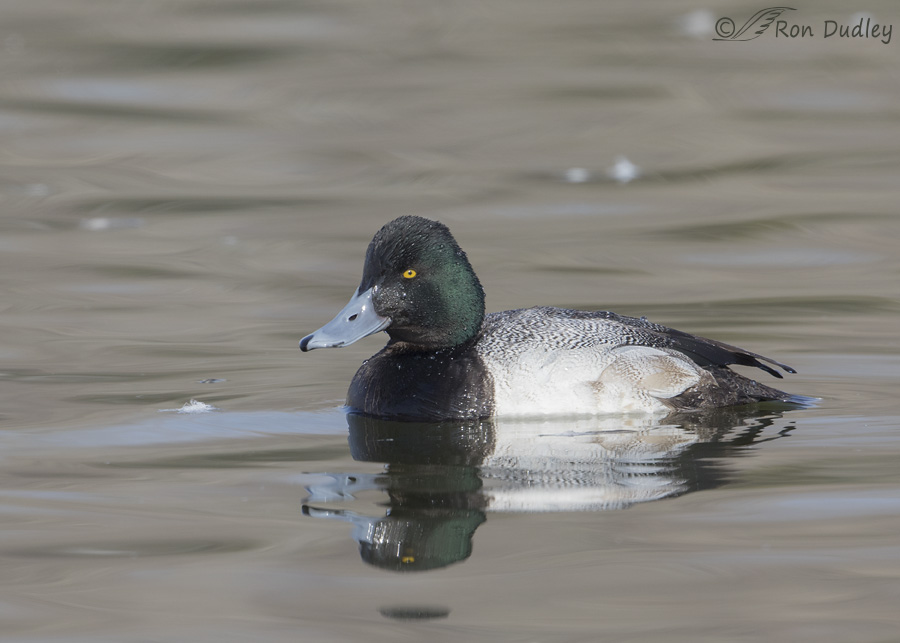
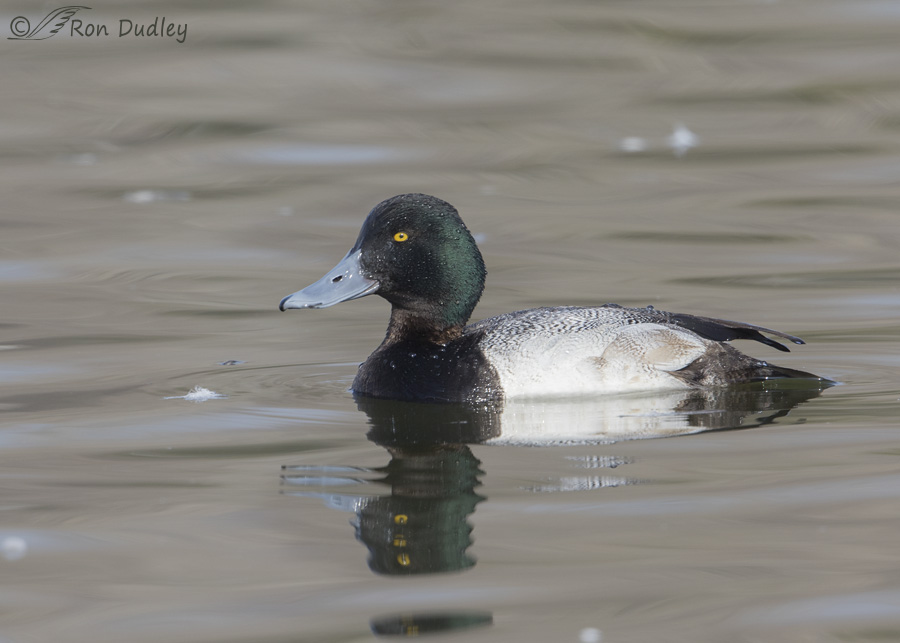
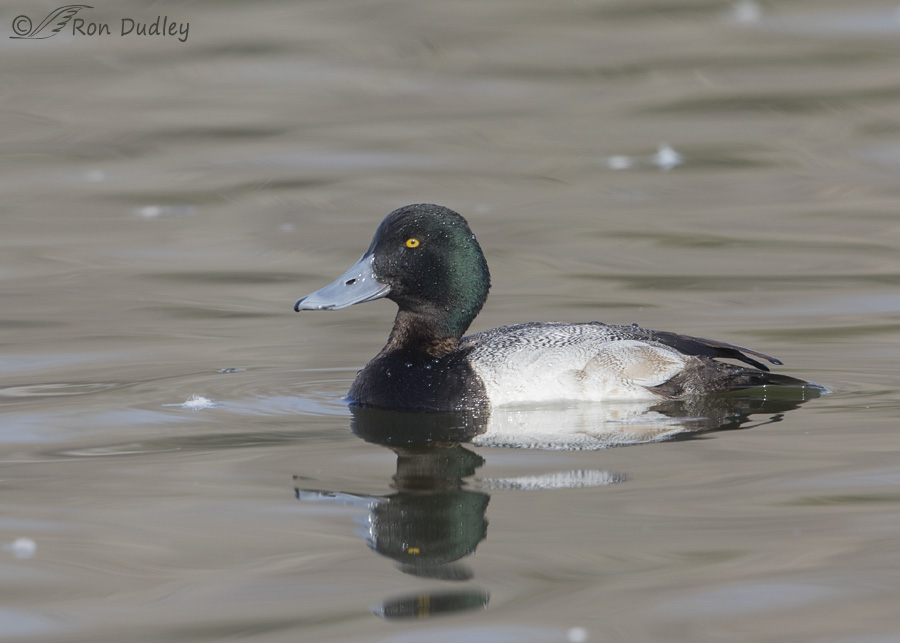
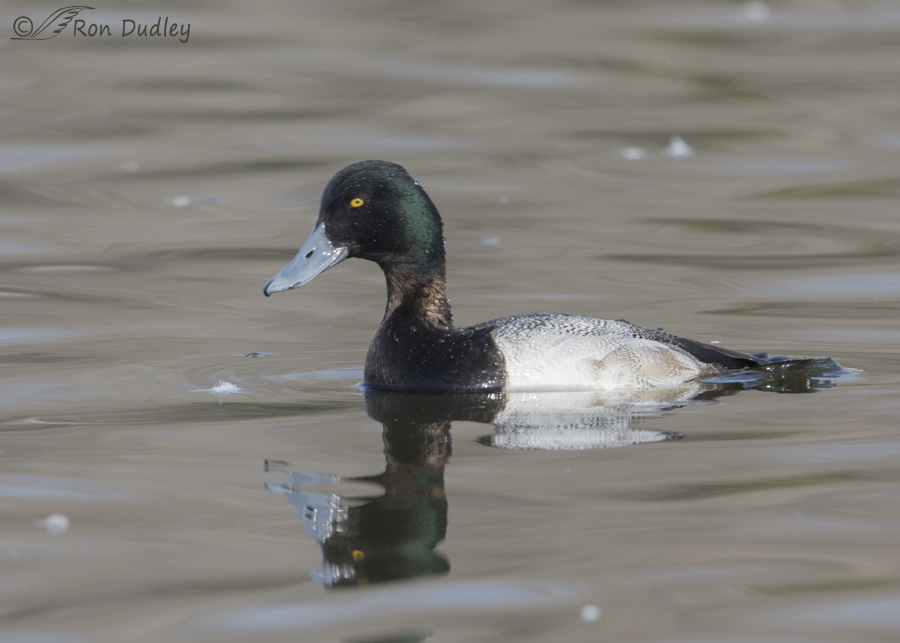
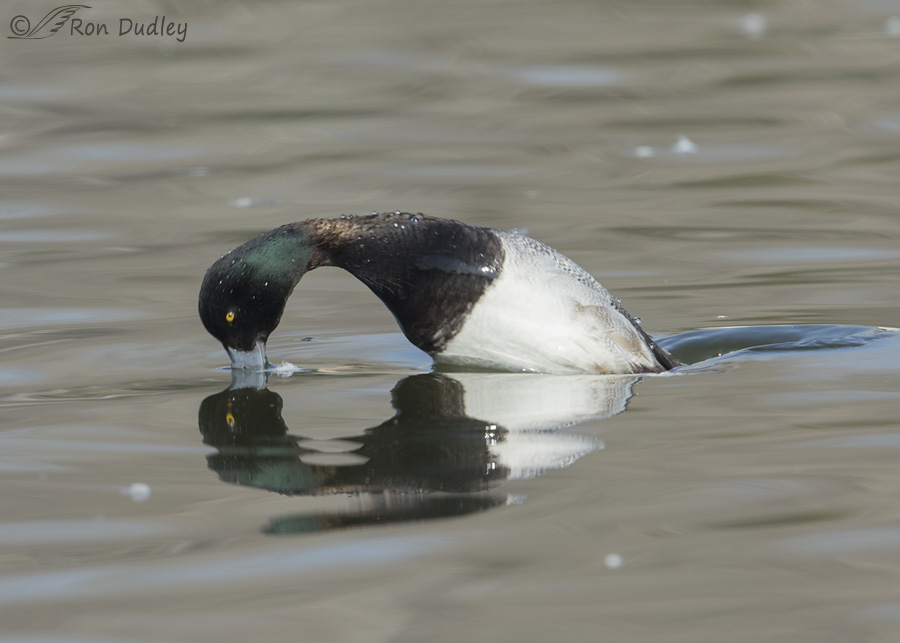
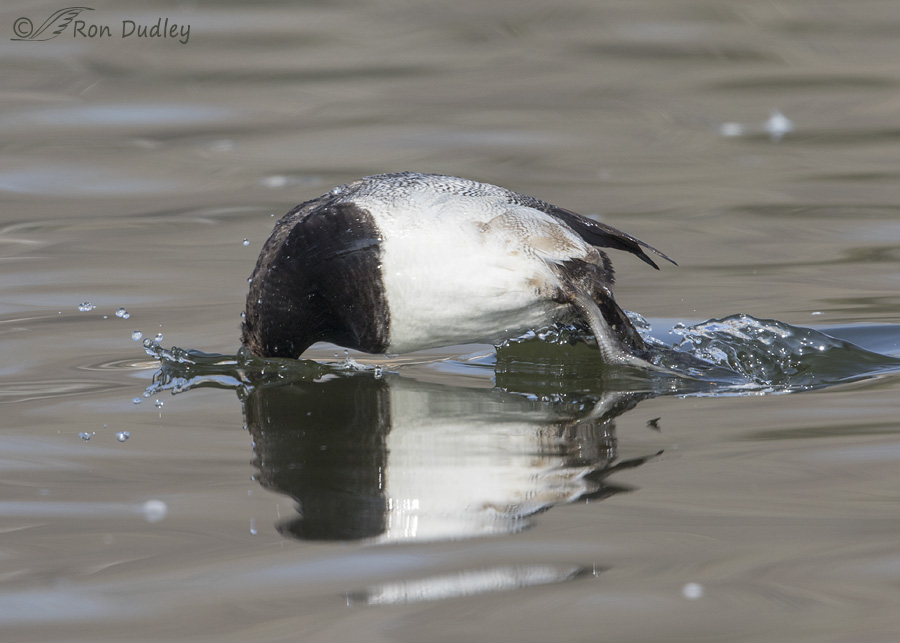
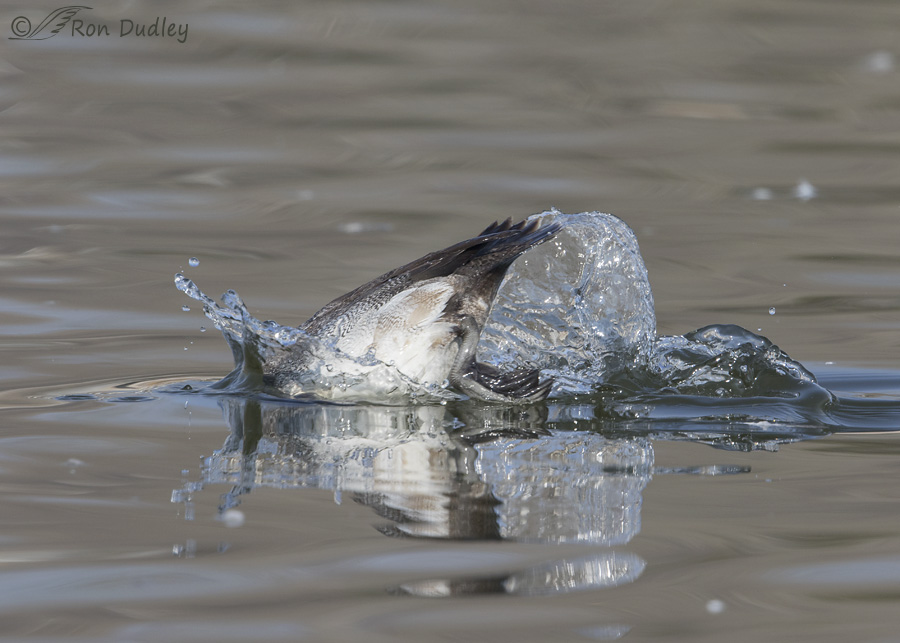
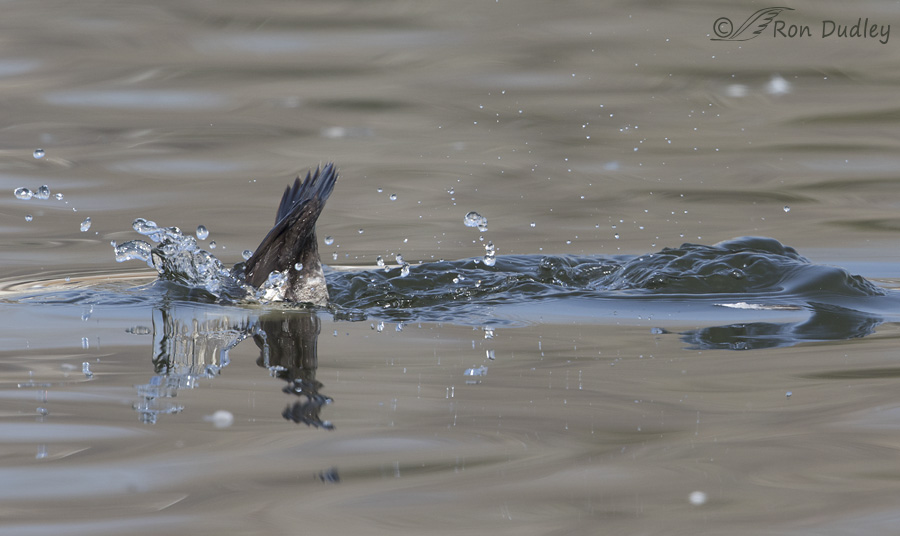
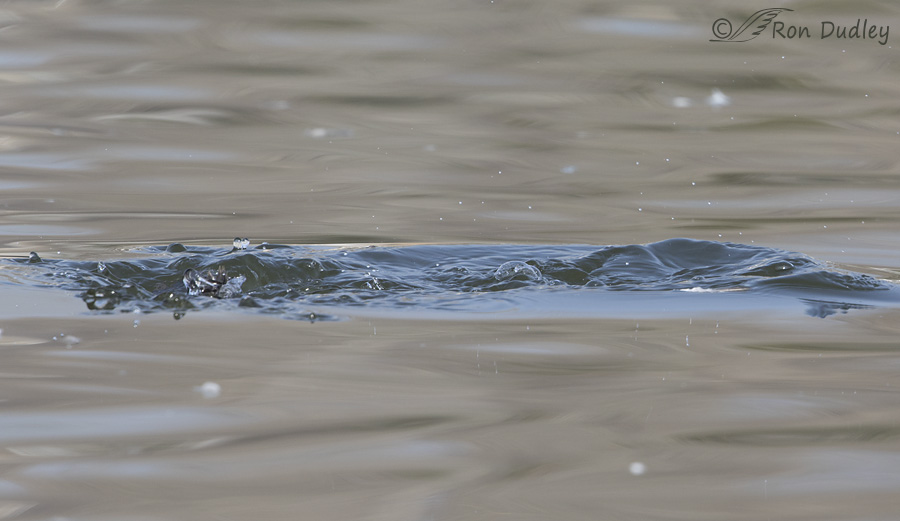
Ron, as expected, this essay hit the nail on the head, regarding anticipating a bird diving, a behavioral feature that I’ve used for a long time.
The scaup, however, is a Lesser Scaup. Crown shape, while very useful on scaup at rest, is a bit less useful on diving scaup, because of the very compression of feathers that is the focus of this essay. Crown shape is also readily and frequently mis-used to arrive at the incorrect ID, though almost always in only one of the two possible directions. I wrote an essay on separating scaup that might help here.
http://cobirds.org/CFO/ColoradoBirds/InTheScope/21.pdf
Keep up the good work!
Ron,
Great shots and nice tips. I keep trying to learn from you and improve my photography. We need some sun and clear days so the ISO can come down for sharper pictures!
Best,
Stephen Clayson
Sensational series and what an interesting observation in behavior!
Charlotte
I am continually amazed not only by what you capture but by the details you observe…ones that I would definitely overlook in so many cases…avery interesting series and link!
Thanks very much, Patty.
Thanks for sharing a fun photo series. I am confident this is a Lesser Scaup. Scaup identification is especially tricky when the birds are actively diving because they frequently change their head shape, as you noted. The biggest tip-off to me is the small size of the black nail at the tip of the bill – something one can only see with high-quality photos like these. Also, in the top photo where you say the bird is most relaxed, the head shape looks more “peaky”, like a Lesser. Here is a link that shows the difference in nail size well (this difference is most consistent in adult males):
http://blog.nuttybirder.com/2015/03/learning-to-identify-lesser-and-greater.html
Evan, thanks for the interesting link and the tip about the relative nail size of the two species – that’s a new field mark for me and will be very useful for me in my photos. Lessers are more common in my area so that fits too.
I suspect you are right with your ID. In a day or two I’ll make a note of it by editing my blog, assuming no one of authority disagrees. Thanks again.
Insert ridiculously redundant string of superlatives here plus an Oh WOW or several! And you know how much I love your behavioral explanations!
Anticipating behavior is basically reading/interpreting the bird(s)’ body language. It’s a necessary skill in falconry, too. The birds are always communicating. The trick is in learning their language and listening (aka anticipating) 😉 I can’t tell you how much I appreciate that you’re a skilled interpreter!
Yes, I suspect you’re at least as aware of body language in your birds as I am in the birds I shoot. Probably more. Thank you, Laura.
An wonderful series. I’ve not spent any time watching birds like this, so the pre-dive changes are somewhat subtle to me (the neck no, the feathers yes). It’s nice to see that despite the fact that some bird shots elude you, this dive didn’t. I am continually amazed by what you are able to capture with your camera.
I think those pre-dive changes are subtle to everyone, Susan. But once you notice them (or someone points them out to you) the first time they’re much more apparent in the future.
ps, you were in aperture priority, not shutter priority. My mess up.
Yup, I’m always shooting in aperture priority. With me that’s a given.
Great post Ron and once again appreciated with my coffee. I was watching a Ruddy sometime back and trying to capture the dive and eventually noticed the flattening of the head feathers that gave me the signal he was about to go. I got several diving shots but once back at my computer noticed a slight blur due to insufficient shutter speed. Remember, I shoot manual and whatever setting I was at, it was not quite fast enough to “freeze” the bird. I have not had the opportunity since. But trying to capture divers, even with the behavior telling you push the shutter button is a test of your reflexes. Love the photos, but as well, what I find fascinating about this series is the apparent sensitivity of the meter while shooting in Shutter Priority. Your shutter speed changing in milliseconds is a pretty impressive demonstration of the capabilities of the equipment.
Headed down south today to Borrego Springs to take in the heat and visit the Sonny Bono refuge at the Salton Sea and hopefully get over to San Diego for Brown Pelicans and Cormorants in breeding plumage. The chase continues.
Thanks again,
Frank
Exactly, Frank. As soon as my meter was exposed to that brilliant white belly my shutter speed doubled. It doesn’t take long at all for the adjustment to be made.
Have a great trip with lots of birds!
What a great series and post!
From my experience you are right on about the species. Both Greater and Lesser are tough, requiring learned characteristics and patience over time. However, head shape is usually the key to identifying which one you are looking at. The head of this duck looks round and appears large compared to the its body, very suggestive of a Greater. Of course position, attitude, behavior all contribute to reasons why Scaup species are one of the most misidentified birds.
Thanks for sharing!
Thanks for the fairly positive confirmation of the ID, Dick. I was leaning strongly that way but I wasn’t sure. I’m more confident now.
Super interesting and useful article Ron. I will take a closer look the next time for the flattening in the feathers. It is interesting that the diving ducks would do this before they dive, makes complete sense to remove the air pockets. Thank you.
Exactly, Ed. Waterfowl are like corks before they flatten their feathers and force all that air out. Thank you.
What a win/win… You derive all the more pleasure and discernment from your attentiveness, you’re rewarded with the shot, and said Greater Scaup gets immortalized, too… make that a win/win/win! Thanks for the vicarious enjoyment and lessons as well as the fine sequence, Ron.
Wow, three simultaneous wins! I’ll take it, Alison. Thank you.
Great stuff Ron. Appreciate getting these pointers. Now…for your next trick, I’de like to know how to predict where the duck will surface so I can photograph that!
Porcupine
Ha, that’s a difficult trick, Porcupine! I once spent many hours trying to do just that with emerging Canvasbacks. Eventually my persistence was rewarded. It’s one of my favorite photos ever, partly because it was so damned hard to get and I worked so hard to get it. That shot can be seen here (third image) if you’re interested.
https://www.featheredphotography.com/blog/2016/03/30/canvasback-a-goal-accomplished-and-an-addiction-reinforced/
Cool even if they look yucky at that point! 🙂
Good Grief! Wouldn’t you love to see what the heck is going on down at the bottom? Going to need a mud filter on an underwater camera for that!
Porcupine
Another Greg Louganis dive! Awesome capture. I’m totally with you on the interesting properties of water. Such a great series. I always think it’s interesting that the rump gets pushed into the water at the start of a dive. It seems counterintuitive to me.
I think teaching all those years probably sharpened your anticipatory eye as well — a good teacher like you has that 6th sense of the wheels turning just before a kid does something stupid. 😉
Now for the $64,000.00 question: did he catch anything?
“I’m totally with you on the interesting properties of water”
Marty, even before reading the rest of your comment (mentioning the biology teaching profession we share) I figured that your interest in the properties of water was at least partly based on our common curriculum.
In my experience these scaups always eat their food underwater so I never see them surface with anything.
Science geeks of America, unite! 😀
WOW! For the sequence, how little time it all took, the beautiful photo’s that document “what happened” and the tutorial on it!:) Thx, Ron. One REALLY needs to be attentive to the bird behaviors to capture this which, in turn, informs about more behavior. 🙂
Judy, “birds are fast” is one of my primary mantras as a bird photographer. Keeping that in mind I’ve been able to get many shots that would have otherwise escaped me.
Brilliant tutorial! Thanks, Ron. I always appreciate your expansive insight.
Thank you, Robert.